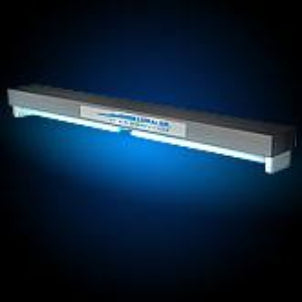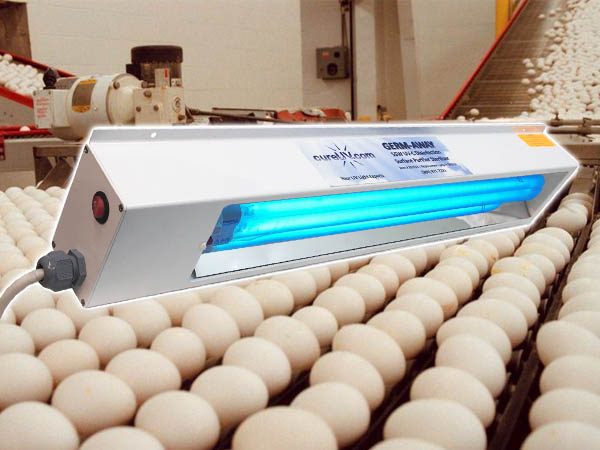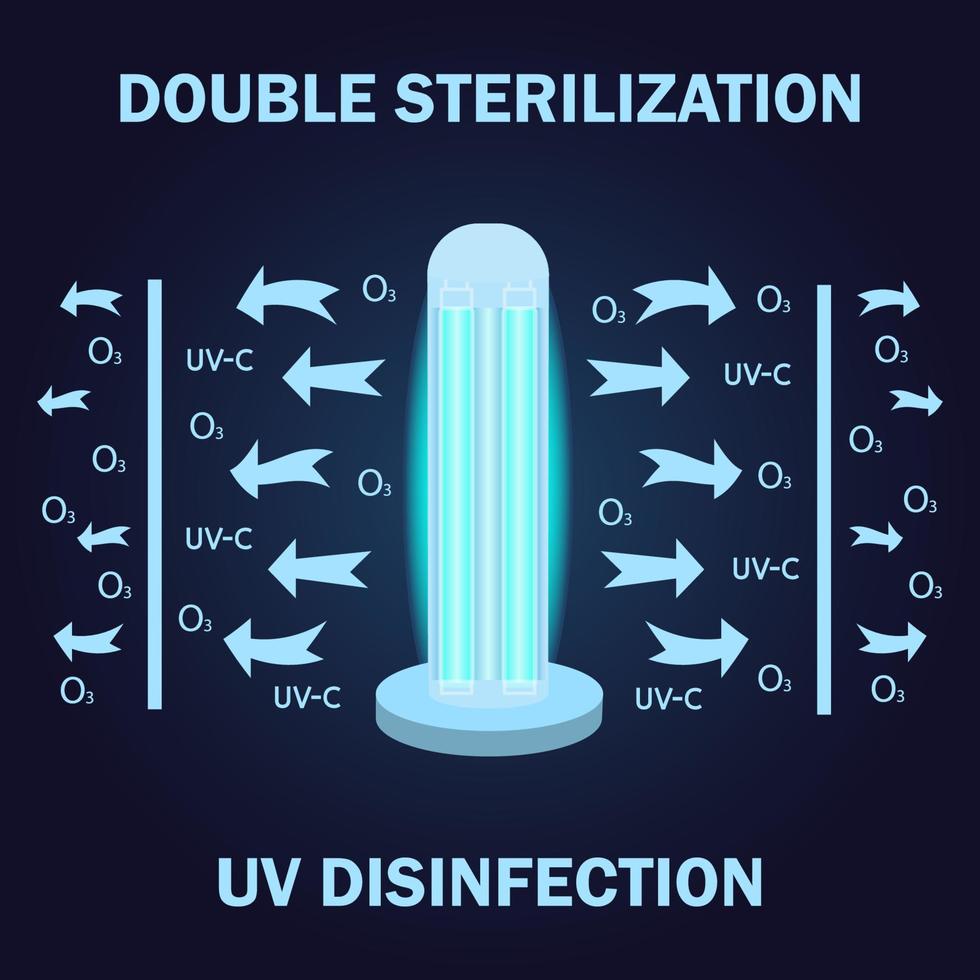UV Surface Disinfection Techniques: Making Best Use Of Efficiency for Germ-Free Spaces
UV Surface Disinfection Techniques: Making Best Use Of Efficiency for Germ-Free Spaces
Blog Article
Utilizing the Potential of UV Sanitation: Safeguarding Health and Health
UV sanitation, an innovation commonly made use of in various industries, has confirmed effective in getting rid of hazardous microorganisms. From recognizing the mechanisms at play to implementing this innovation in our day-to-day lives, this conversation intends to shed light on the capacity of UV disinfection and its role in safeguarding our health and hygiene.
Understanding UV Disinfection
UV disinfection is an extremely reliable and extensively used method for ensuring and eliminating damaging microorganisms health and wellness and hygiene. This method uses ultraviolet (UV) light to suspend bacteria by damaging their DNA and preventing them from replicating. UV disinfection is particularly efficient against bacteria, infections, and various other microbes that can cause infections and diseases.
The concept behind UV disinfection is simple yet powerful. UV sanitation can be used in numerous settings, consisting of water treatment plants, healthcare centers, food processing sectors, and air filtration systems.
One of the benefits of UV sanitation is its ability to effectively and effectively eliminate a variety of pathogens without the demand for ingredients or chemicals. Unlike other sanitation techniques, such as chlorine or ozone, UV sanitation does not introduce harmful spin-offs or chemical residues into the setting. Furthermore, UV sanitation is a non-contact process, which implies that it does not need physical call with the microbes, decreasing the risk of cross-contamination.

The Scientific Research Behind UV Disinfection
The performance of UV sanitation exists in its ability to disrupt the genetic material of bacteria, rendering them unable to duplicate and thus eliminating their dangerous possibility. This high-energy UV-C radiation is most reliable in sanitation applications due to the fact that it can pass through the cell wall surfaces of microbes and harm their DNA or RNA.
When bacteria are subjected to UV-C radiation, the energy is taken in by their genetic material, triggering bonds to break and forming chain reactions that disrupt their ability to replicate. This stops the bacteria from reproducing and spreading infection. UV sanitation is specifically efficient against germs, fungis, and infections, including usual virus such as Escherichia coli, Salmonella, and Influenza.
The science behind UV disinfection is sustained by extensive study and research studies. It has been revealed that exposure to a sufficient dosage of UV-C radiation can accomplish a high level of sanitation, usually surpassing 99.9% efficacy in eliminating bacteria. However, it is very important to note that the effectiveness of UV disinfection depends upon various variables, including the strength of UV-C radiation, exposure time, range from the UV source, and the susceptibility of the bacterium to UV radiation.
Applications of UV Sanitation
Given the extensive research and effectiveness of UV sanitation in interrupting the hereditary product of bacteria, it is important to explore the various useful applications of this innovation. UV disinfection has proven to be a useful device in a large range of industries where preserving a safe and clean atmosphere is important.
One significant application of UV sanitation is in healthcare settings. UV light can be utilized to decontaminate surfaces, equipment, and even the air in healthcare facilities and clinical centers. This helps to decrease the danger of healthcare-associated infections and makes certain a more secure environment for patients and healthcare workers.
One more crucial application is in the food and beverage market. UV disinfection is utilized to treat water and get rid of dangerous virus, such as E. coli and Salmonella, from the manufacturing procedure. uv surface disinfection. This ensures the safety and quality of the products we consume
UV disinfection is additionally extensively made use of in water therapy plants and wastewater therapy facilities. It is an effective method for destroying damaging germs, viruses, and parasites that can be existing in water resources. This assists to offer safe and tidy alcohol consumption water to neighborhoods and safeguard the environment from pollution.
In addition, UV sanitation is used in the pharmaceutical industry to decontaminate tools and maintain the integrity of items. It is also utilized in research laboratories and research facilities to stop contamination and ensure precise results.
Advantages of UV Sanitation Innovation
One significant advantage of employing UV sanitation modern technology is its capability to effectively get rid of bacteria without making use of extreme chemicals. This is particularly beneficial in different settings, such as medical care facilities, water treatment plants, and food handling industries, where the visibility of unsafe microorganisms positions a significant threat to public health and wellness and safety.
Unlike typical disinfection methods that rely upon chemicals like chlorine or ozone, UV disinfection modern technology uses ultraviolet light to target and destroy the DNA of microorganisms, successfully neutralizing their capacity to recreate and create infections. This procedure not just gets rid of the demand for potentially harmful chemicals however also reduces the threat of chemical residue or by-products continuing to be in click to investigate the treated setting.

Moreover, UV sanitation modern technology is eco-friendly. As it does not depend on the use of chemicals, it gets rid of the demand for their transport, disposal, and production, reducing the overall carbon footprint connected with disinfection processes. In addition, UV sanitation systems have a longer life-span contrasted to chemical-based approaches, causing much less regular replacement and additional decreasing waste.
Executing UV Disinfection in Life
To efficiently execute UV disinfection in daily life, organizations and individuals can incorporate mobile UV disinfecting gadgets into their hygiene regimens and cleansing methods. These gadgets are designed to give off ultraviolet light, which has been confirmed to eliminate or inactivate a vast array of microbes, including fungi, microorganisms, and viruses. By making use of portable UV sanitizing tools, individuals can decontaminate frequently touched surface areas and items, such as cell phones, doorknobs, laptop computers, and secrets, reducing the danger of spreading germs and infections.
In enhancement to integrating portable UV sterilizing tools, it is essential to follow correct guidelines and recommendations for efficient UV disinfection. This includes ensuring that the gadget is used properly and for the advised duration to attain ideal disinfection results. It is additionally important to focus about his on safety procedures, such as wearing protective glasses and staying clear of direct exposure of the UV light to the skin.

Moreover, organizations can execute UV disinfection modern technology in different settings to enhance health techniques. For example, medical facilities and medical care centers can make use of UV disinfection robots to disinfect individual spaces, operating cinemas, and other high-touch locations. Food processing markets can integrate UV sanitation systems into their manufacturing lines to improve food safety and security and prevent contamination.
Verdict
In final thought, UV sanitation technology holds excellent potential in securing health and hygiene. With its many navigate here benefits, UV disinfection is an important tool for keeping a healthy and balanced and tidy setting.
Unlike various other disinfection methods, such as chlorine or ozone, UV disinfection does not introduce dangerous byproducts or chemical residues into the environment. It is crucial to keep in mind that the performance of UV disinfection depends on various elements, including the intensity of UV-C radiation, exposure time, distance from the UV resource, and the vulnerability of the bacterium to UV radiation.
Another advantage of UV disinfection innovation is its capability to give continuous and fast sanitation. Unlike handbook cleansing approaches, which can be taxing and call for substantial labor, UV sanitation systems can be automated and operate continuously, making sure constant sanitation without human treatment.To properly apply UV sanitation in everyday life, companies and people can integrate portable UV disinfecting tools into their hygiene regimens and cleaning practices.
Report this page